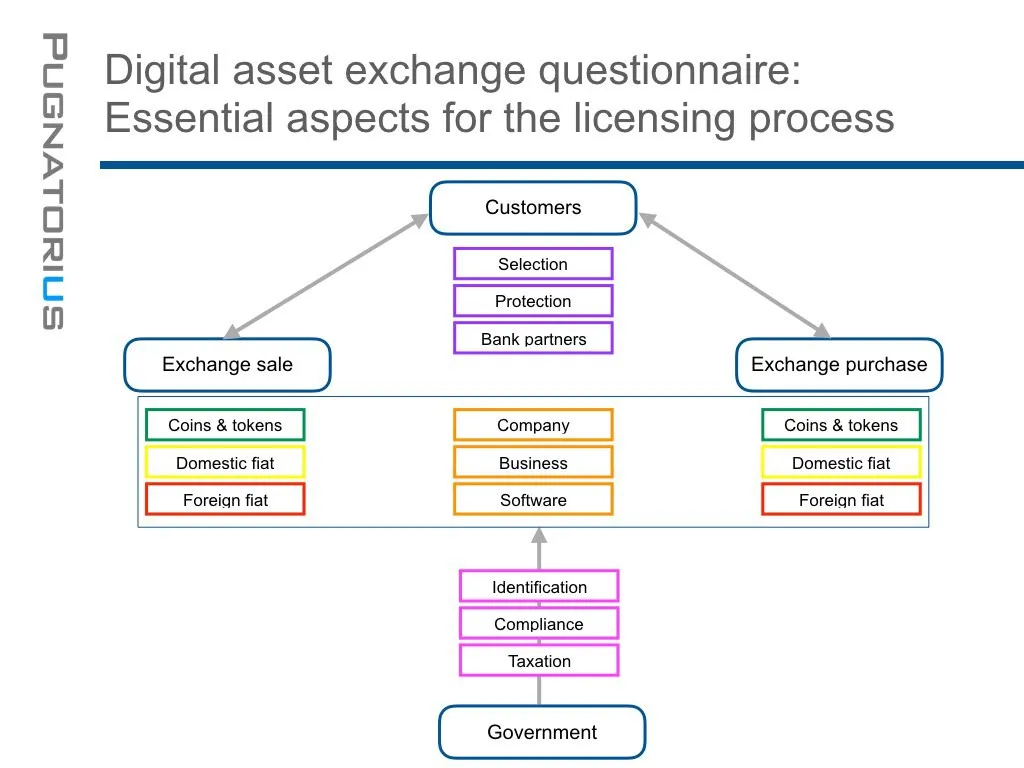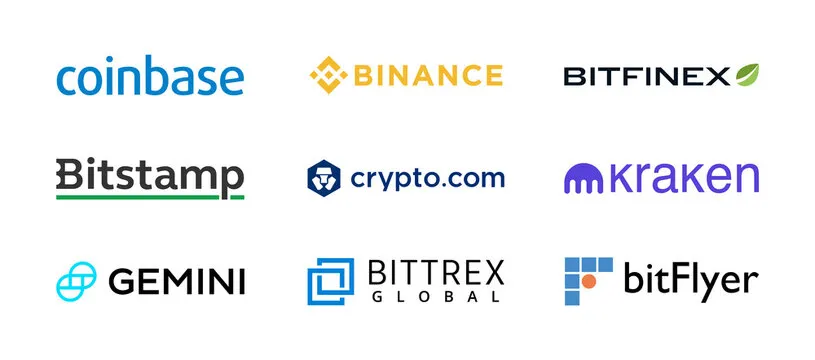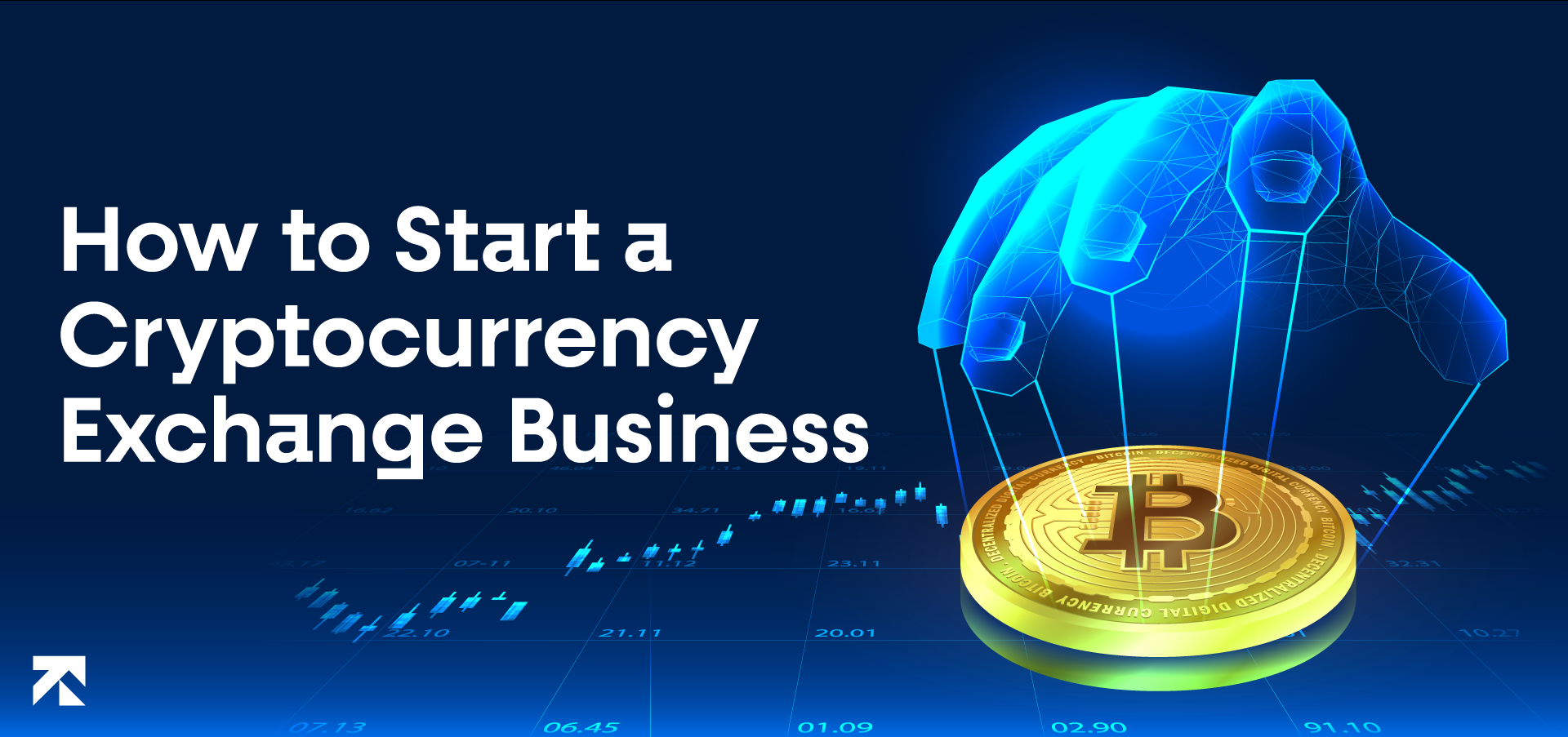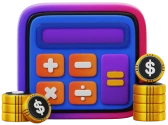So you are interested in how to start a cryptocurrency exchange, Don’t worry we have you covered. Binance is a name that needs no introduction in today’s world.
For those of you who don’t know, Binance is a popular cryptocurrency exchange app through which you can exchange cryptocurrency for real-world money and vice versa. The news of Crypto exchanges has been exploding around the internet such as FTX Crash. But before diving into the development process of the app, let’s start with some Business flow of cryptocurrency exchange, such as what is blockchain’s mechanism and how it will be used in transactions.
You might find many crypto exchange app ideas online but this crypto exchange platform development guide will assist you in understanding the mobile app development process and the business flow model. We will at the most important factors to consider when developing mobile apps. We will go over each step in detail, and you will understand what is important to remember while the development is underway. Because building a site like Binance or Coinbase can really make you spend a fortune and you need to make sure that you spend that fortune in a very systematic way.
Business Flow
The basic idea behind a cryptocurrency exchange platform is that users should be able to buy and sell cryptocurrencies on it. Two modules are required as a bare minimum for the crypto exchange platform. One for users to trade on the exchange platform and one for admins to manage operations. The platform’s main module functionalities are listed below.
Before breaking new ground, true professionals learn the rules of the game and set goals, determining the type of outcome they desire. We will begin with this task because we are professionals.
The following points should undoubtedly be among your cryptocurrency trading objectives:
- Define the specific amount of money or percentage of your monthly income that you will invest in cryptocurrency;
- Determine your level of risk tolerance;
- Define your specific short and long-term goals.
 Photo: Medium.com
Photo: Medium.com
After establishing objectives, it is critical to comprehend what is required for a successful and rapid startup in the cryptocurrency market. You might be surprised to learn that theory is the least important aspect of this field. Many people claim they lack the necessary information and knowledge to conduct this type of business. However, the majority of the strategies I will discuss do not necessitate a thorough understanding of the cryptocurrency business world. It will be sufficient for you to understand the fundamentals of the cryptocurrency economy.
So, what’s the issue? You must practice. Only practice, not a book (including mine), will help you understand where to buy, sell, store, and transfer cryptocurrency.

A trustworthy DCE should have a website with a ratings and reviews section, a support chat, and the currency amounts available for conversion. For instance, you can see that this DCE provides a specific amount of Bitcoin, Ether, and cash dollars.
Another useful feature of digital currency exchanges is the ability to reserve a currency’s price for a set period of time.
The exchange fees vary dramatically, ranging from 3% to 30%.
In a calm market, the average fee is 7%. When the market falls or rises, the DCEs raise their fees.
Development of a Crypto exchange platform app
Starting a cryptocurrency exchange requires a lot of development, so in this section, we will talk about how to create a cryptocurrency exchange in the sense of technical development. Blockchain technology’s applications in various industries have been like a wild roller coaster ride in recent years. Specific applications and use cases spread like wildfire on the market. Simultaneously, many use cases failed miserably simply because some founders wanted to ride the blockchain hype to attract investors, but they compromised on the technology-product fit in the process. Out-of-the-box fundraising mechanisms such as ICO and STO, Decentralized finance applications, Non-Fungible Tokens, and so on piqued the market’s interest and propelled the blockchain domain forward.
Functional & Non-Functional Requirements of a Crypto exchange platform app
Developers use the functional and non-functional requirements to design solutions that implement the necessary functionality, within the limits that the constraints imposed. Testers determine how to verify whether the requirements were correctly implemented.
User Module
The customer should be able to register for the platform by providing the necessary information. The customer should be able to upload their KYC documents for verification purposes. Once the verification process is complete, they can access the platform. The user should be able to link their own wallet where the cryptocurrencies purchased from the platform can be stored. Customers should be able to review market data and charts to better understand how cryptocurrencies perform.
Detailed Functional Requirements
- Registration or Sign up
Option to register the account and create a personalized profile
- Login access
The user should be able to access the account by providing the necessary verification information. The user should be able to see all of the platform’s features.
- Verification and authentication
Integration with a third party to link KYC documents
- Analytical Dashboard
The user should have the option to view the market status of each coin. View a list of the top high-volume, highly traded assets. The option for users to view data in live charts The user should have the option to access the account by providing the necessary verification details. The user should have the option to view all the features of the platform. option to view all live buy/sell orders placed in the dashboard. A one-click trade option should be provided in the app, and last but not least, a feature to switch the type of trade should be there.
- Trading
The trading module should have a feature to select the type of trading, an option to view the market order and review the limit order, as well as payment gateway integrations.
- Wallet Integration
The app should include a powerful feature that allows users to switch from the fiat option to the crypto option in order to link wallet addresses, check their account balance, or view fund transfers in a stable currency. This module should also have a proper transaction history management system through which users can check their transactions from anywhere at any time.
Admin Module
The admin should be able to monitor the platform’s overall performance. The admin should be able to manage the customer’s profiles and view their transactions. If necessary, features should allow the administrator to prevent specific customers from making trades. The admin should be able to manage the trading fees.
- Fee Administration
The system should allow you (the user) to define the trading fee based on the trade unit and money system, as well as the margin fee based on the trade unit and currency.
- Customer Management
A customer profile and dashboard should be available in the customer management module. Customer profile blocking
- Trade Management System
A proper module of management should be developed where trading for client accounts can be enabled or disabled and Clients have access to place orders with verification of KYC
Tech Stack for Development
Front End Development
Frontend architecture is a set of tools and processes designed to improve the quality of front-end code while also creating a more efficient and long-lasting workflow. Let’s dig deeper into this definition and consider what our role as front-end architects would entail.
Design
Consider a building with no distinct architecture. The important decisions were all left to the builders who were doing the work. One wall was built of stone, another of brick, a third of wood, and the fourth was omitted because it was trendy. The overall look and feel of the website remain in the hands of skilled designers, but the frontend architect creates the frontend approach and design system philosophy, While talking about the design there is no better frame than react native in terms of design. The architect creates a clear vision of what the end product, the code, will look like by creating a system that all front-end developers will work within. When a frontend architect establishes the vision, the project has a baseline against which to test code. How could we tell if our code met that standard if we didn’t have a design for the finished product? A well-designed system will include checks and balances to ensure that all code contributed to the system adds perceivable value rather than just adding lines of bloat.
Planning
The planning stage entails mapping out the development workflow with a clear design in mind. What steps will a developer take to write a line of code and see it to completion? In its most basic form, this strategy entails FTPing into a server, editing a file, and clicking Save. Version control, task runners, CSS processors, documentation tools, test suites, and server automation will all be used in most projects.
The frontend architect’s goal is to create a well-oiled machine that provides quick and painless setup, useful feedback in the form of linting, tests, and documentation, and reduces much of the human error that occurs when we perform repetitive tasks.
Oversight
Frontend architecture should never be treated as a “set it and forget it” proposition. There is no such thing as a perfect or complete design or plan. Clients’ (and developers’) needs will change and evolve over time, and a process that worked well in one phase of the project may need to be revisited later to improve efficiency or reduce errors. The ability to make those adjustments on the fly is a key skill of a front-end architect. Modern build tools make it very simple to modify workflows and distribute them to all team members. Some have wondered if becoming a front-end architect entails taking on management responsibilities and never writing another line of code again.

Back-End Development
While developing a strong backend for a crypto exchange app with market data APIs, you should also pay enough attention to design details and focus on important UX aspects such as
Minimal
One of the most appealing aspects of the Back-end Framework is this. Framework developers frequently forget that “less is more.” The Back-end Framework philosophy is to put as little as possible between your brain and the server. That does not imply that it is not robust or that it lacks sufficient useful features. It means that it gets in your way less, allowing you to fully frame your ideas while also providing something useful and the best option for creating a minimalistic backend system laravel framework.
Flexible
Flexible Another important aspect of the Back-end Framework philosophy is its extensibility. Back-end Framework provides a very basic framework, and you can add different parts of Back-end Framework functionality as needed, replacing whatever does not meet your requirements. This is a breath of fresh air. So many frameworks give you everything, leaving you with a bloated, mysterious, and complex project before you’ve even written a single line of code. Very often, the first task is to waste time carving off unneeded functionality or replacing the functionality that doesn’t meet requirements. The back-end Framework takes the opposite approach, allowing you to add what you need when you need it.
Deployment of Web Applications is Simple
A web application can also provide functionality to other web applications (among other things). In general, the term “app” refers to something that has functionality and is not just a static collection of content (though that is a very simple example of a web app). While there is currently a distinction between an “app” (something that runs natively on your device) and a “web page” (something that is served to your device over the network), that distinction is becoming increasingly blurred, thanks to projects like PhoneGap and Microsoft’s decision to allow HTML5 applications on the desktop as if they were native applications. It’s not difficult to imagine that in a few years, there will be no distinction between an app and a web application
Programming Based on Events
The core philosophy of Node.js is event-driven programming and this option can be the right choice while designing a node base back-end system which means a programmer must understand what events are available to you and how to respond to them. Many people learn event-driven programming by creating a user interface: the user clicks on something, and you handle the “click event.” Because it is understood that the programmer has no control over when or if the user will click something, event-driven programming is extremely intuitive. It may be more difficult to make the conceptual leap to responding to server events, but the principle remains the same.

Database Development
At its most basic, a database is a collection of related data. It is not required to be electronic. Libraries’ old card catalogs were almost certainly databases. A database could be a scientist’s spiral notebook where he or she keeps notes and observations, or it could be a phone or address book. However, when we say “database,” we usually mean electronic databases that run on computers.
These are some of the features which you need to keep in mind when designing a database
Work Statement
A statement of work is a preliminary document that describes the work that must be completed in general. completed on a project This is frequently prepared by those who want the work done and offered to contractors for bidding. However, in some cases, such as this one, it can be used as an initial clarification of the current task. A statement of work is essential for any major project so that everyone understands what is expected. Without it, people frequently discover, sometimes late in the process, that different people have very different expectations for what the project should include. a declaration a good reference throughout the project to keep everyone on track
Examining Business Documents
The forms and reports that a company uses to collect and disseminate information are invaluable resources for understanding various aspects of the company’s data requirements. For starters, they offer clear insights into daily business processes. They demonstrate how information about various transactions is gathered and then passed on to other people and departments. Examining business documents can reveal not only what information is required, but also when and in what order it is required. Second, carefully scanning the forms and reports will reveal many, if not the majority, of the individual pieces of data that the database will require. Business documents can show how data will be used, such as how it will be summarized, analyzed, and presented.
Database Types
Relational databases can meet the needs of various users. These various requirements may necessitate various setups and structures. A relational database is commonly used as a transaction database. A transaction database, as the name implies, records data from immediate transactions such as sales or orders as they occur. These databases can be attached to a cash register or hidden behind Web forms like those found on Amazon.com or eBay. Transaction databases are designed to be fast and efficient. Nobody wants to be kept waiting while their order is being processed. Furthermore, given the global nature of business, many of these databases must be as accessible as possible, preferably 24 hours a day seven days a week.

Security measurements
To achieve security objectives, it is necessary to have a thorough understanding of security procedures and techniques. A comprehensive Security Policy (SP) is the most important reference to guide security development, and it must be viewed as a law by all hardware engineers, developers, application architects, software engineers, testers, and project leaders. It defines the responsibilities for all roles involved in the development process and establishes rules for all development phases: requirements, design/architecture, implementation, testing, and maintenance.
Core Security
Confidentiality
Confidentiality requirements address the prevention of Sensitive Data Disclosure to Unauthorized Individuals.
Integrity
Integrity requirements are required to ensure the information’s reliability and accuracy. Checking software functionality ensures reliability, and checking that data is modified by an authorized person in an authorized manner ensures accuracy, as does ensure that handled data is complete and consistent.
Availability
Availability Requirements safeguard against unintended destruction or disruption of Service. These are documented as Service Level Agreement (SLA) components such as Maximum Tolerable Downtown Time [MTD] and Recovery Time Objective [RTO].
Accountability
Accountability is all about keeping track of user actions and acting as a detective. It aids in detecting when an Unauthorized User or an Authorized User makes an unauthorized change.
General Security
Sessions
Sessions are used to keep the state running. On successful user/process authentication, a Session Identified (ID) is issued to Track the authenticated state in standard application communication.
Error Handling
When an unwanted or unscoped condition is encountered, providing Errors and Traces is part of the normal process.
Configuration administration
When an unwanted or unscoped condition is encountered, providing Errors and Traces is part of the normal process. Application features and functionality are driven by configurations. Specific practices and measures should be defined to avoid the leakage and security of sensitive data. Measures such as Global Variable Initialization and Disposal, Hashing/Encryption of Sensitive Data
Operational Security
Deployment Environment
The list of security requirements should include information about the environment in which the software will be deployed and who will be using it. This data drives environmental compliances and industry standard requirements.
Archiving
Archiving is required to ensure Business Continuity, Regulatory Requirements, and Organizational (Retention) Policy. It is important to capture archiving requirements to comply with the organization’s policy and regulations.
Anti-Piracy
It is a requirement of the Commercial off-the-shelf (COTS). It includes mechanisms for code obfuscation, signing, anti-tampering, licensing, and intellectual property protection. This requirement should be addressed explicitly during Requirement Gathering to avoid future discrepancies and legal obligations.
Frequently Asked Questions Regarding The Development Of Cryptocurrency Exchange Software
- What is Crypto exchange software?
A cryptocurrency exchange software is a website where users can buy, sell, and trade cryptocurrency. Users can deposit fiat currency (such as US dollars) and use those funds to purchase cryptocurrency on cryptocurrency exchanges, which operate similarly to online brokerages.
- Is it a good idea to build a crypto exchange?
Yes! It’s a really great business opportunity to build a crypto exchange in 2022. The cryptocurrency market was worth USD 927.4 million in 2021 and is expected to grow at an 11.1% CAGR over the forecast period.
- What is the cost of building a crypto exchange?
A cryptocurrency exchange platform’s development costs can range from $50,000 to $ 98,000 for a basic exchange with common features. However, the cost of developing a website and an application can range from $1,32,000 to $1,45,000.
- Should I start a cryptocurrency exchange?
Only if you have the proper resources and budget should you start cryptocurrency exchange because the idea of starting crypto exchange is not as easy as it sounds.
Conclusion
Blockchain was initially dedicated to the Bitcoin cryptocurrency when it was invented in 2008 by an individual or group of individuals known by the pseudonym Satoshi Nakamoto. Since then, the technology has been used in a wide range of other fields. Apps like Binance are getting really popular these days. The Binance android app has crossed 50 million plus downloads now
In a nutshell, the rise of cryptocurrencies is transforming financial transactions, introducing new ways to pay and remit money online that do not rely on pre-existing credit and point-based payment systems. Cryptocurrencies have the potential to create a truly open and borderless world of finance, depending on how they develop. As the global economy embraces a digital ecosystem and digital currencies, investors are flocking to diversify and grow their wealth and investments. This has resulted in cryptocurrencies gaining traction among investors and disrupting traditional financial systems at the macroeconomic level. Crypto exchange platforms are crucial in this process because they connect investors who want to buy/sell cryptocurrencies. Simply put, these exchange platforms facilitate the conversion of ‘normal’ currencies into ‘digital’ currencies. The idea to start a cryptocurrency exchange is very challenging so make sure you should have a proper understanding before jumping into it



 Photo: Medium.com
Photo: Medium.com






